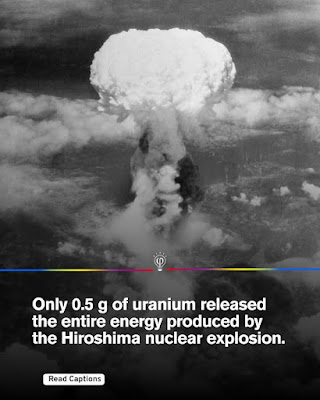This half-a-gram of Uranium is about the weight of a butterfly we see in the garden. Yet in that moment of nuclear fission, every atom of those 0.5 grams transformed into pure energy. The result was a blast equivalent to some 15,000 tons of TNT that vapourised everything within its reach and forever altering the course of history.
How to fathom this conversion of matter into energy? Albert Einstein’s famous equation, E = mc², tells us why a tiny amount of mass (that little butterfly’s worth of uranium) can unleash an astronomical amount of energy once you multiply it by the square of the speed of light.
That's how potent and terrifying the power of the atom. A tiny fleck of matter, barely noticeable, yet capable of levelling a city in seconds. A grim reminder of both the promise and the peril of nuclear physics: the same fundamental principle that can benefit entire countries with nuclear power can also cause unimaginable destruction.
So next time I see a butterfly, I’ll remember that even the tiniest speck of matter can unleash forces beyond our imagination. Forces that can power cities or obliterate them. With more nations acquiring nuclear capabilities, from rogue states such as North Korea to regional powers like India and Pakistan, the margin for error grows perilously slim. Recent violence in Kashmir is a reminder of how conflicts can swiftly escalate into wars between neighbours, with the spectre of nuclear retaliation looming over every crisis. My hope is that cooler heads will prevail, and that we’ll heed Einstein’s insight as a call to responsibility so that the atom’s promise of energy never tips into its potential for catastrophic destruction.

No comments:
Post a Comment